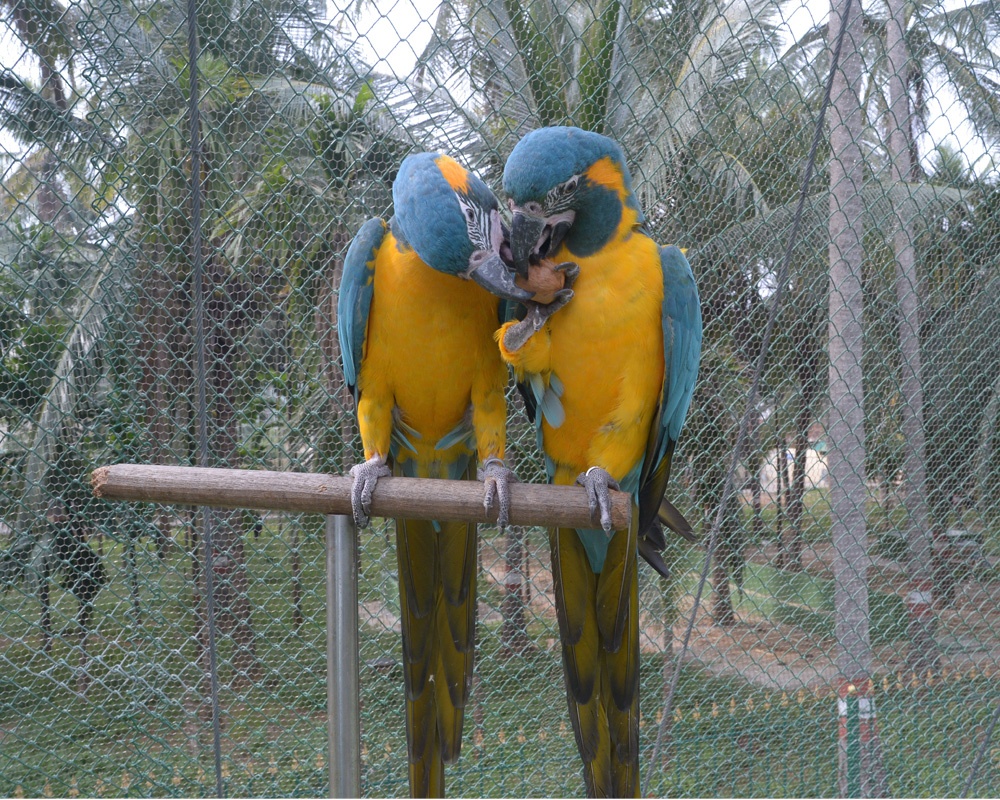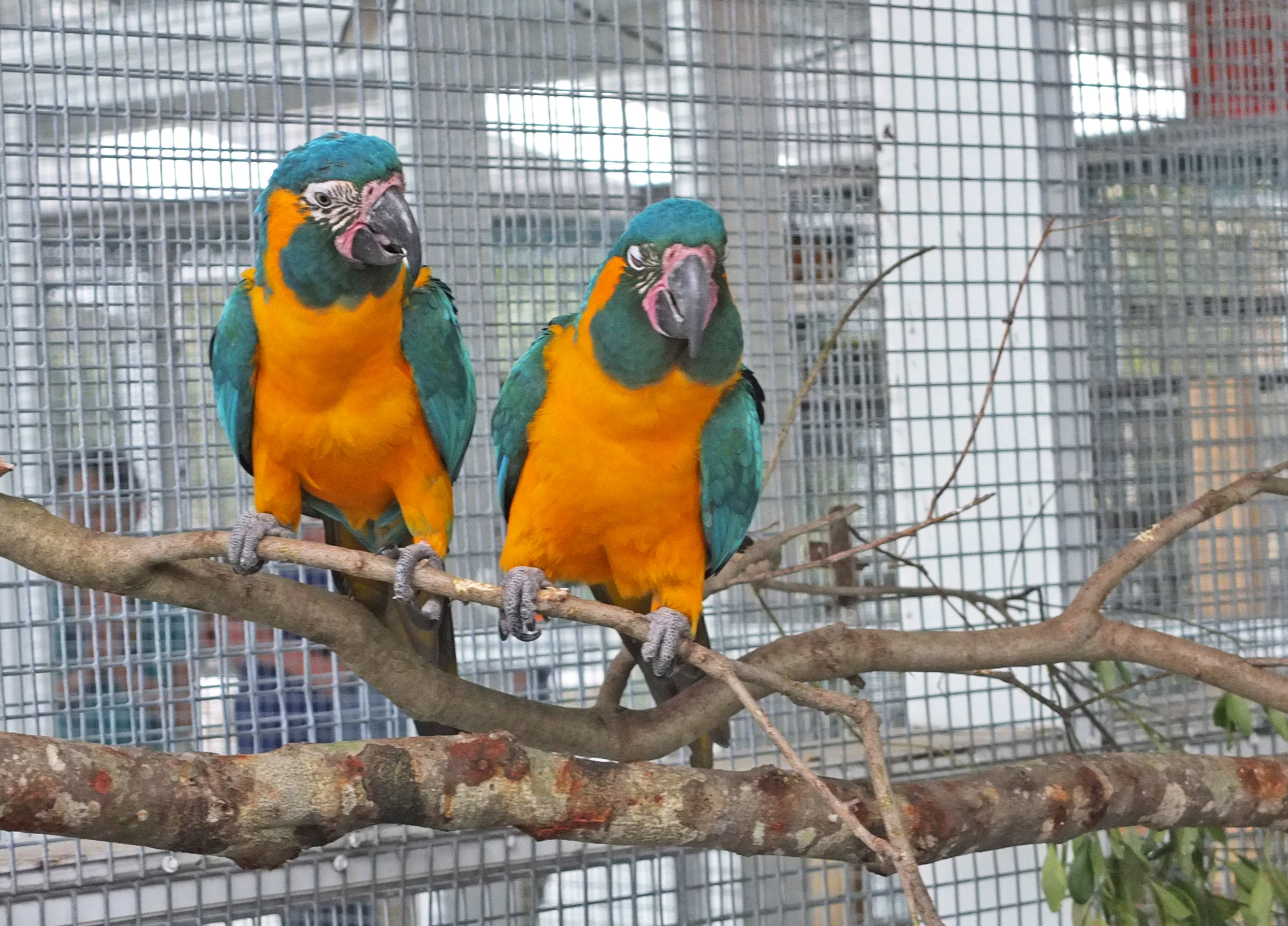Description
Description
The blue-throated macaws are about 85 cm (33 in) long including the length of its tail feathers and has a wingspan of approximately three feet or 0.9 m. It weighs about 900 g (32 oz) to 1,100 g (39 oz). There is little easily observable sexual dimorphism; however, males tend to be a little bigger than females with approximate masses of 750 g and 950 g respectively. Upperparts are turquoise-blue, slightly duller on crown and brighter on rump. Underparts largely bright yellow but the vent is pale blue. It has bare facial patch obscured by blue feather-lines merging into blue lower cheek and throat, separated from crown by narrow yellow stripe and bare pink skin around base of the large, black bill. On the face there is a sparsely feathered patch of skin near the base of the large dark-colored bill that has 5 or 6 horizontal stripes of blue feathers which are unique for every blue-throated macaw and can be used to individually identify adults.
Behaviour of Blue throated macaws
Blue-throated macaws are most frequently found in monogamous pairs, but small groups of 7–9 do occur and one large roosting group of 70 is known. It is not known if these macaws will pair with another mate if their original mate dies. Their main mode of locomotion is flying, but they are also able to climb trees, maneuver along branches and walk on the ground. These birds are active during the day and usually stay in one general area. Blue-throated macaws communicate mostly by sound. When they suspect danger, they emit a very loud alarming call and promptly fly off. Blue-throated macaws are known to communicate with each other with quiet caws as well.
Feeding of blue throated macaws
This macaws do not eat seeds and nuts to the same extent as many other macaw species do. Instead, they primarily eat fruit from large palms. The palm species Attalea phalerata is the most predominant source, but they will also eat from Acrocomia aculeata and Mauritia fleuxosa. The macaws eat the mesocarp from ripe and nearly ripe fruit and have also been observed drinking the liquid from very immature fruit.
Breeding
Blue-throated macaws usually breed once a year but if the eggs or nestlings are lost, they may produce a second clutch in the same breeding season. A clutch consists of one to three eggs and incubates for 26 days. Nestlings have a mass of approximately 18 g at hatching and fledge at 13 to 14 weeks. The young macaws are still fully dependent upon their parents for food after they fledge until they are capable of foraging by themselves. Even after this occurs, it has been observed that young blue-throated macaws will stay with their parents up to a year. During this time, the parents will skip an entire breeding season. They reach sexual maturity at about 5 years of age.
Aviculture
They are relatively easy to find in captivity, and the captive population consists of about 1000–1100 individuals. Individuals are kept in several zoos around the world, among them the Santa Cruz zoo in Bolivia. Captive blue-throated have successfully hybridized with the Military Macaws, producing offspring known by aviculturists as Corrientes macaws





Reviews
There are no reviews yet.